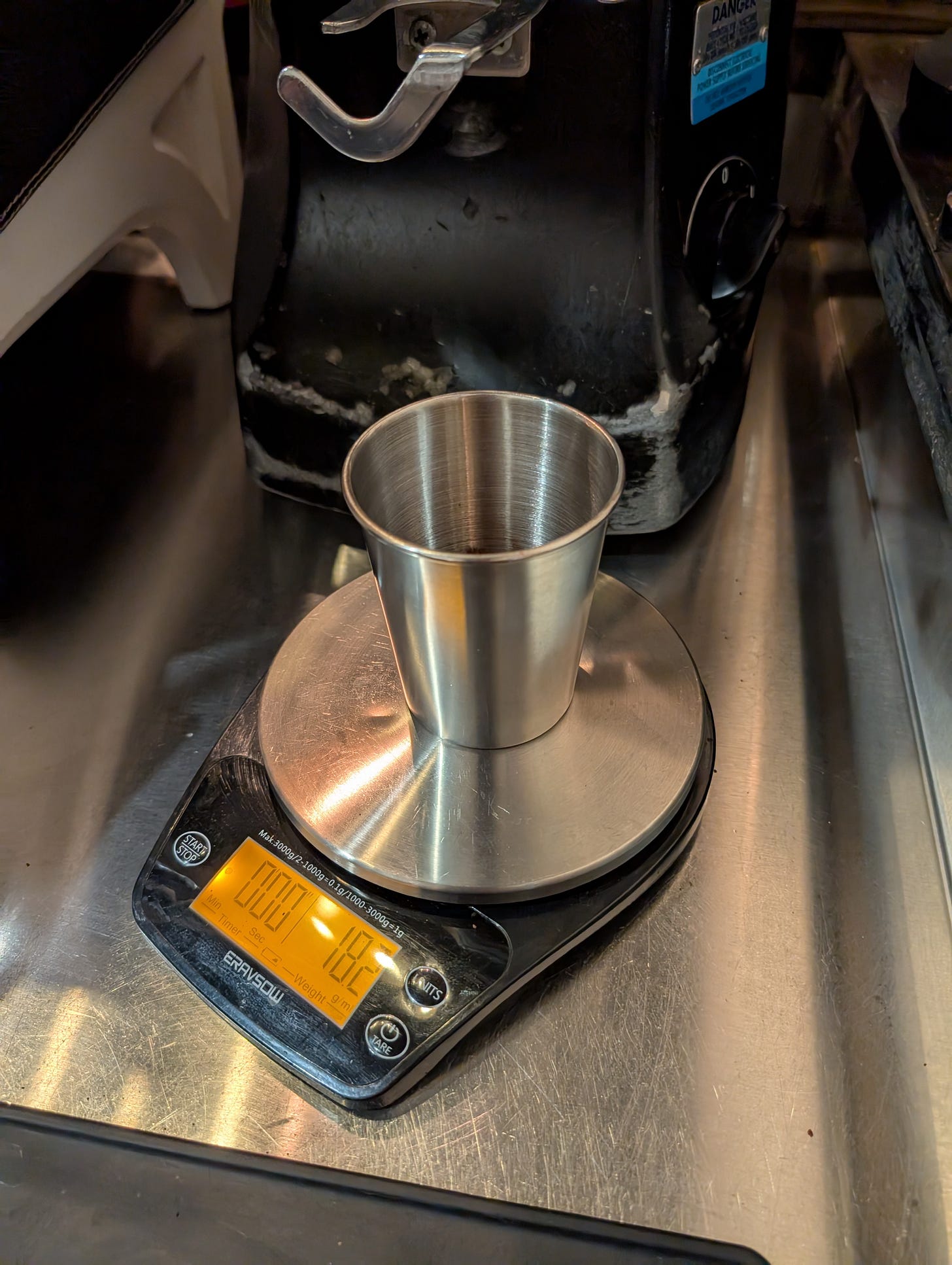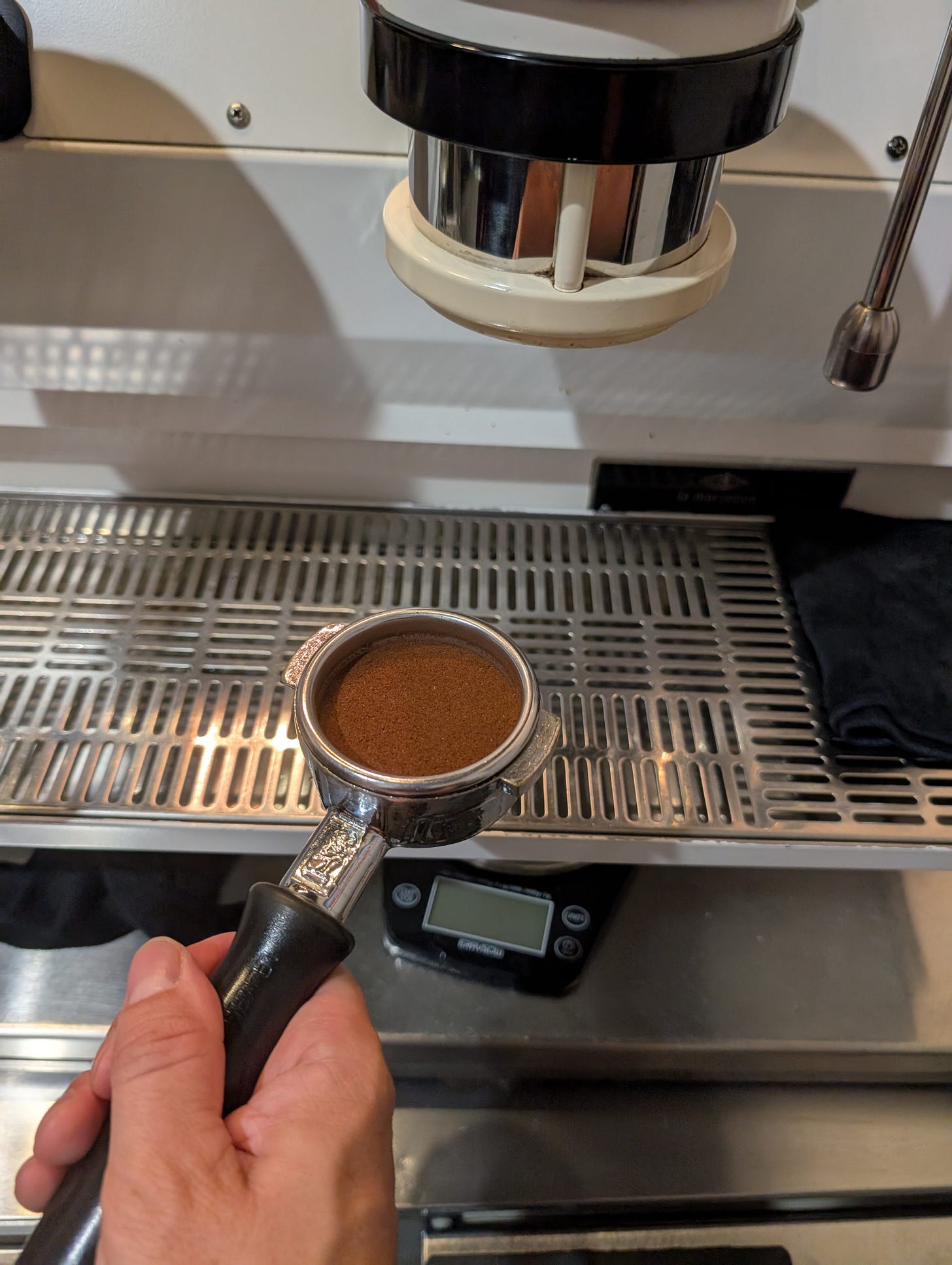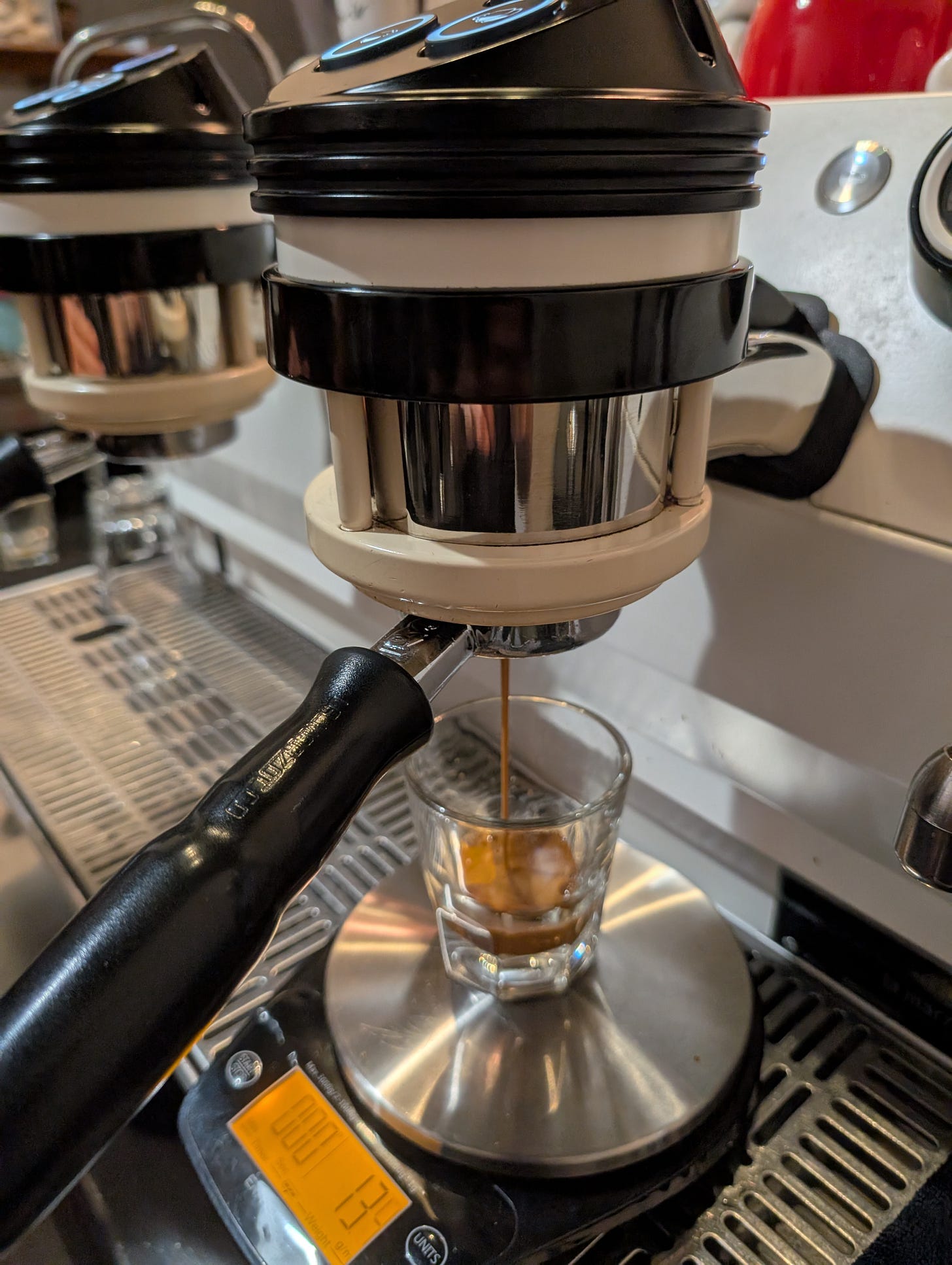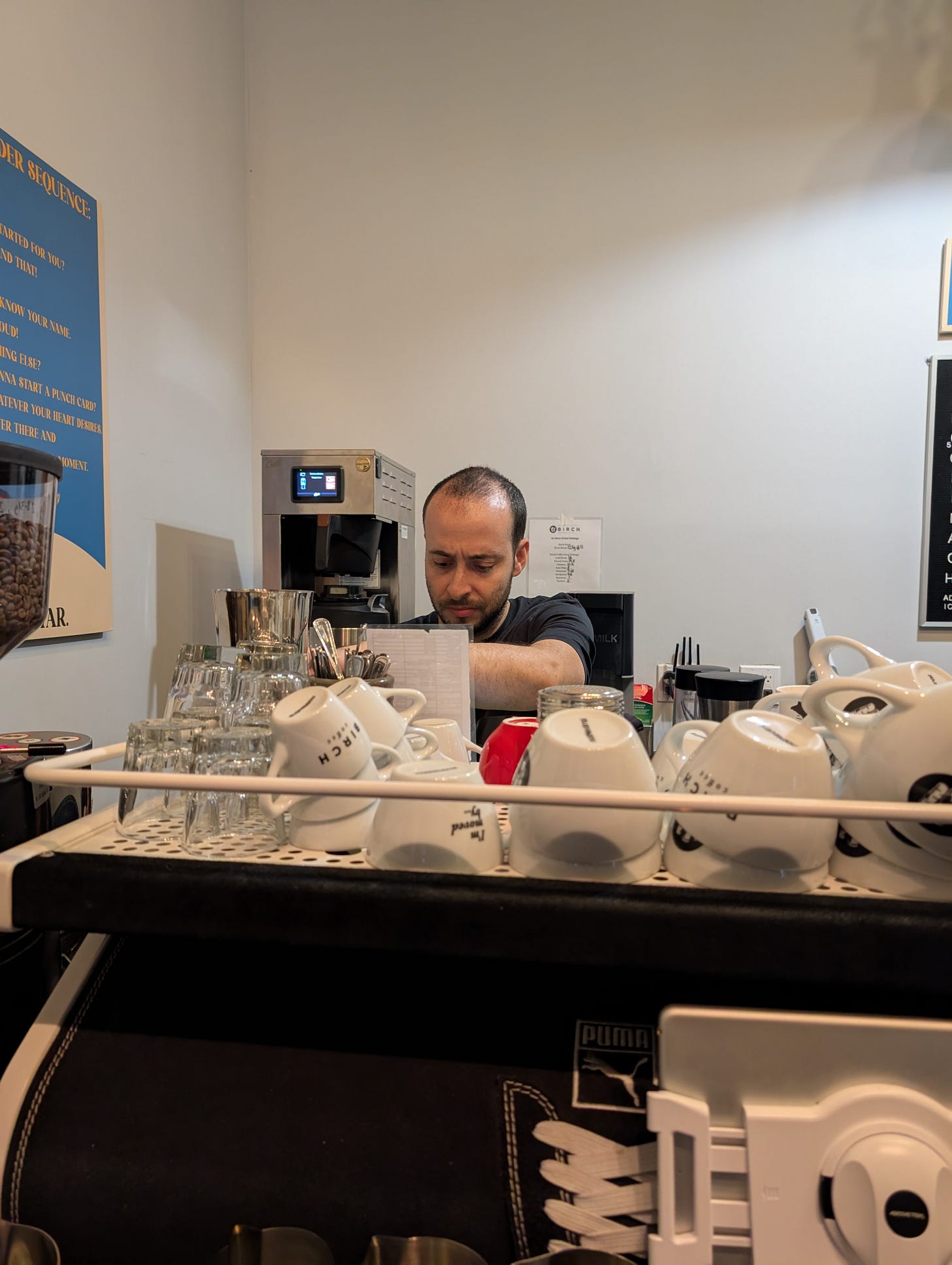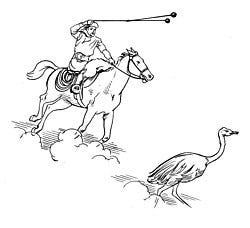Espresso shots and writing tips
Consistency and repetition pay off
I am a twice-daily coffee drinker and thanks to that habit, I saved up enough loyalty points (2500 to be exact) to exchange for a 3-hour espresso making class, taught by the same instructor who trains all of the baristas. When I asked him how many other people had taken the class, he told me that I was the first person to actually redeem their points for the class. I think the lesson here is that consistency and patience pay off.1
We started the class by learning how to grind beans and create the espresso puck. This is not just a matter of selecting the grind size and tamping down the grounds. If you flatten an uneven pile of espresso grounds, you are going to create uneven water pathways once the shot is being pulled. Additionally, you need to make sure the weight of the grounds is in a certain range, as the grinder doesn’t always give you the same amount each time. Scales are your friend!
Then comes the satisfying physicality of tamping a shot. Some shops use a tamping machine to speed up the process, but I wanted the full experience!
After you insert the puck into the machine, then it’s just hit a button and watch the magic happen. Or at least that’s what I assumed.
In reality, you need to monitor both the time it takes for the shot to brew and how much liquid you are getting from the puck (again using a scale). Too quick and the shot is underextracted, giving you a sour taste. Too long and the shot is overextracted, giving you a bitter taste. You’ll have to adjust the grind size if you are consistently getting one or the other.
OK, so once the shot is pulled, then it’s time to steam the milk for your latte. The first thing I noticed was that the milk frothing pitcher gets pretty hot as the milk is steamed.2 To avoid burning your hand, you need to use a specific grip on the handle, which of course makes it a bit harder to position the pitcher under the steam wand. Steaming milk for the right consistency involves a mixture of pitcher positioning, wand positioning, and timing. After you finish steaming your milk, you bang the pitcher on the counter a few times to get rid of any bubbles, swirl the milk, and then you’re ready to make latte art!
Making latte art looks easy, but it certainly is not. My instructor showed me how to make heart and tulip art, and then told me to start making drinks from start to finish, over and over again.
I spilled milk and coffee on the floor many times, but by the end of the class, I was able to make passable versions of the coffee shop staples.


At some point during my drink-making marathon, I realized that rather than serially making the shot and then steaming the milk, real baristas are doing both in parallel. It is a clockwork balance that they make look easy and I left the class with an increased appreciation for the baristas at my local shop.
So what does any of this have to do with writing?
Learning anything for the first time seems overwhelming at first. There are so many details and specifics, and you have no confidence in what you are doing. You feel a little better once you’ve done it, but it feels awkward and a bit forced.
Then, after cycling through again and again, you become more proficient, things seem more natural, and you’re able to do more steps on autopilot, leaving your brain free to concentrate on the higher level tasks. The same is true for physical tasks, like making a latte or swinging a golf club, as well as for mental tasks, like writing.
Writers debate all the time whether you need to be writing every day in order to become a better writer. While I don’t think writing every day is necessarily mandatory, I don’t see how you can become a better writer unless you are actually, you know, writing, instead of merely thinking about writing or planning to write, or reading books about how to write.
Even if you’ve never written before, all you need is a kernel of an idea and a blank page. That’s how I started writing a little more than 13 years ago, when I wrote a 1000-word flash fiction piece based on a random trope from TV Tropes. Since then, I’ve written a lot, but I’ve also spent probably more time thinking about writing or wishing I had written more.
There’s no substitute for the actual thing.
On that note, let’s turn to the work log!
Blood of Atlantis
Fran and I had our Zoom script review yesterday for issue 3, where we went over the script page-by-page, I fielded her questions, we discussed page layouts, and I pasted random photo references into the script (like the below).
Fortunately, our Zoom did not result in any major changes, and once I send Fran the further fine-tuned script, we’ll be able to put issue 3 into production! I also began outlining the second issue of Project Lovestruck, and am hoping to finish that in a week or two.
NYC Questing Guild
I continued plowing away on the latest chapter of The Gauntlet, which features a different POV character from the bear of a chapter that took me forever to finish. A bit more set-up before we get into the final series of climaxes.
Stuff I read played this week
After reading a good amount of books and comics at the beginning of July, I have barely read anything in the back half of the month for one good reason:
Clair Obscur: Expedition 33 has taken the gaming world by storm with its magnificent visuals, its scrappy development story, and its haunting story.3 But what sold me on the game was its music:
The entire soundtrack is filled with stunning scores, but what’s even more incredible is that this is composer Lorien Testard’s first-ever professional score work. In fact, Testard was working as a guitar teacher and writing the score for the game in his free time when the COVID pandemic forced him to cancel all his lessons and work on the game full time. Bandcamp recently interviewed Testard and it’s definitely worth a read.
Support my work
A reminder that paid subscribers get access to my full digital library - books, comics, short stories, and novellas, along with advance access to all my future books and comics before anyone else.
Or, grab a copy of Blood of Atlantis issues 1-2:
I decided against naming this week’s column “What making espresso taught me about writing” because you all deserve better than that clickbait!
I noticed after taking the class the baristas at my local shop just grab the milk pitcher with their bare hand as they steam. “How are you touching that? It gets super hot!” I said. “I don’t really feel it any more,” was the response. In order to clean the milk pitcher, you’ll need to grab the still hot bottom and push it down onto the washer. The impulse once you touch it is to immediately stop, but that’s the wrong move! Because once the cold water hits the pitcher, it cools down right away. The lesson here is sometimes you just have to go for it.
I’m currently at the beginning of Act III and will probably write more about the game once I beat it, so stay tuned!



